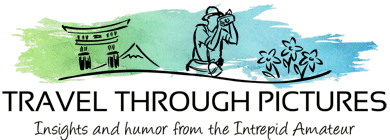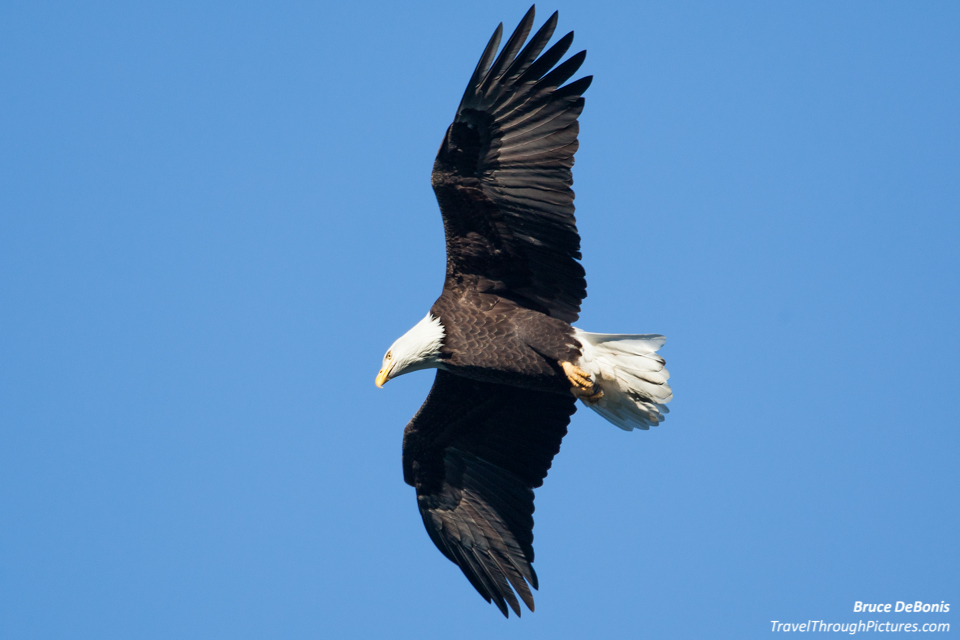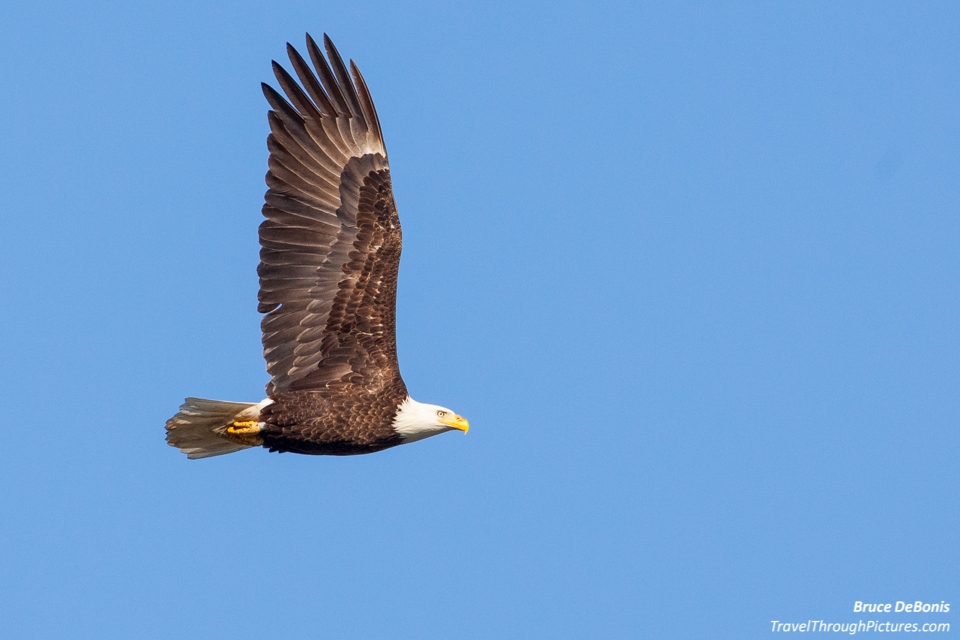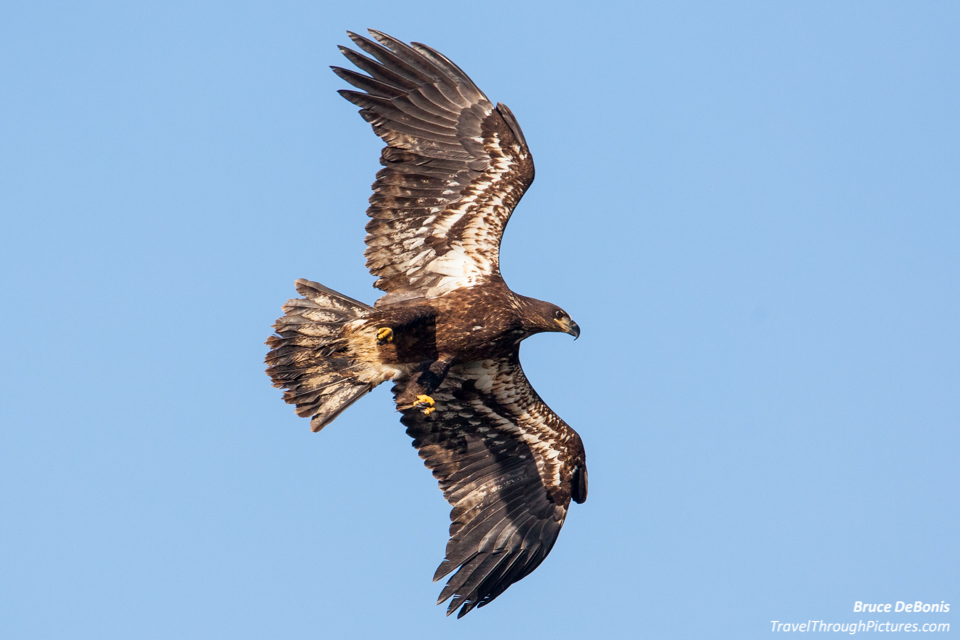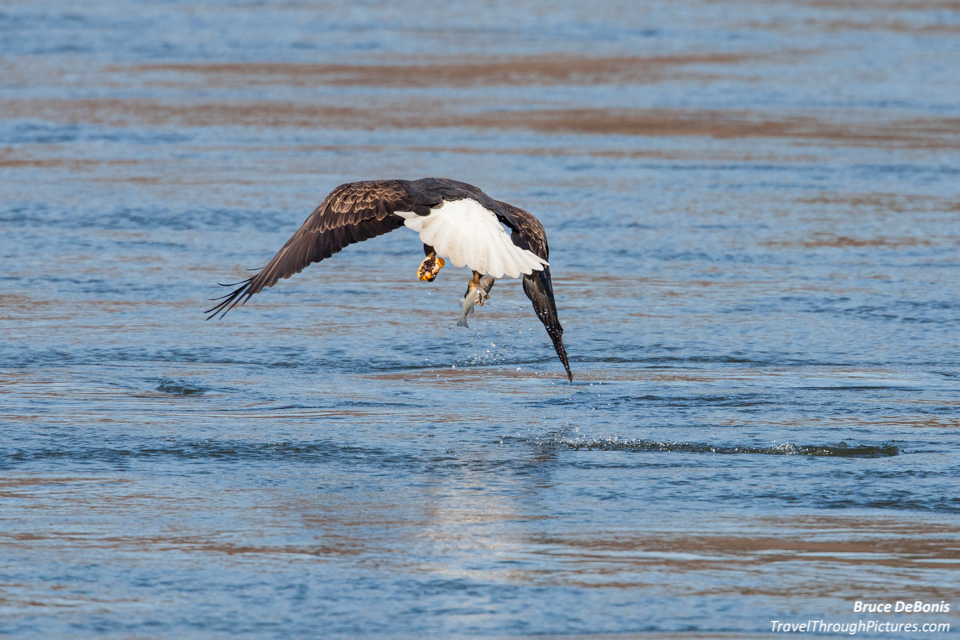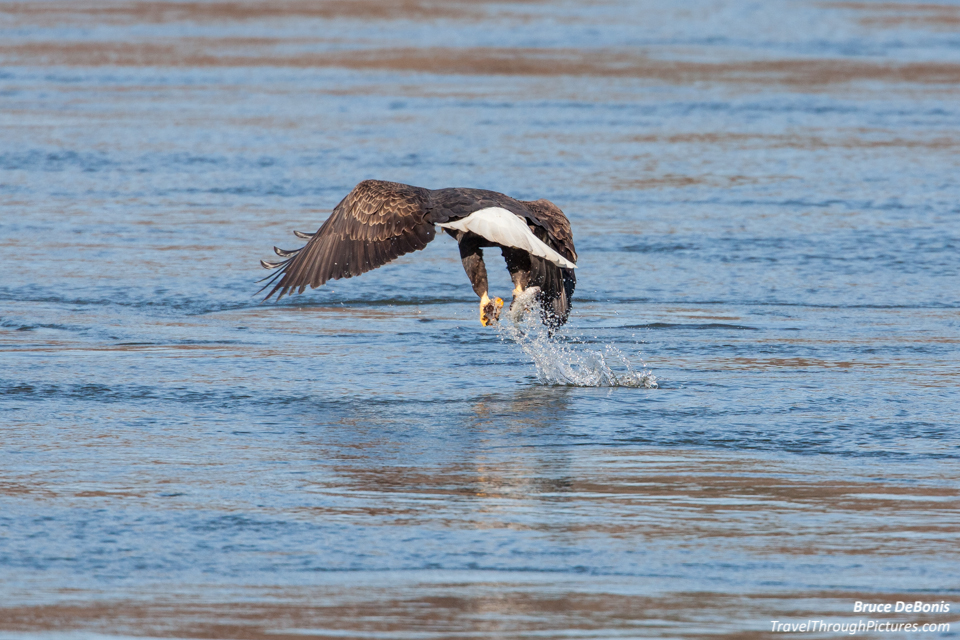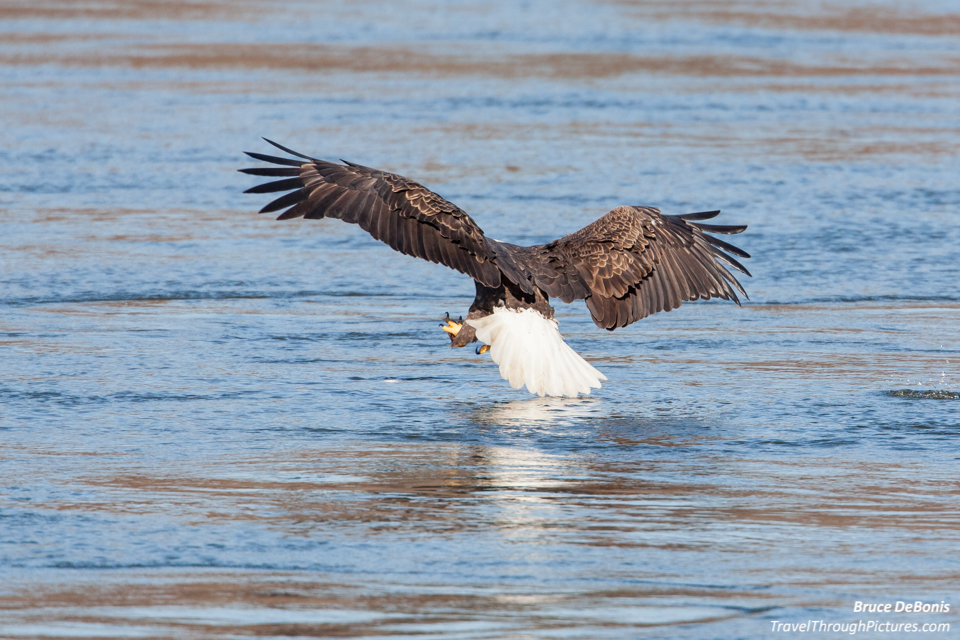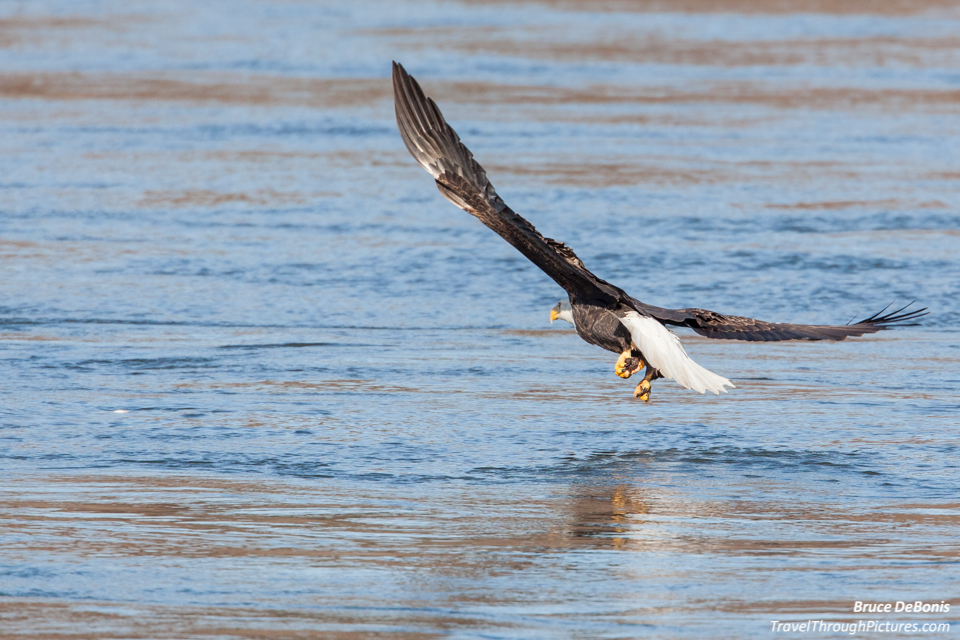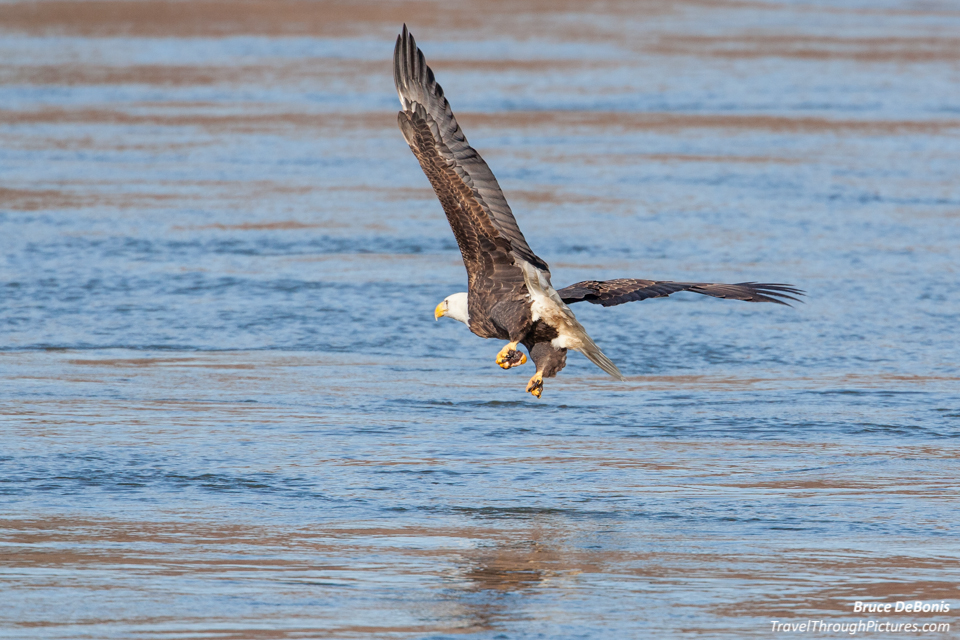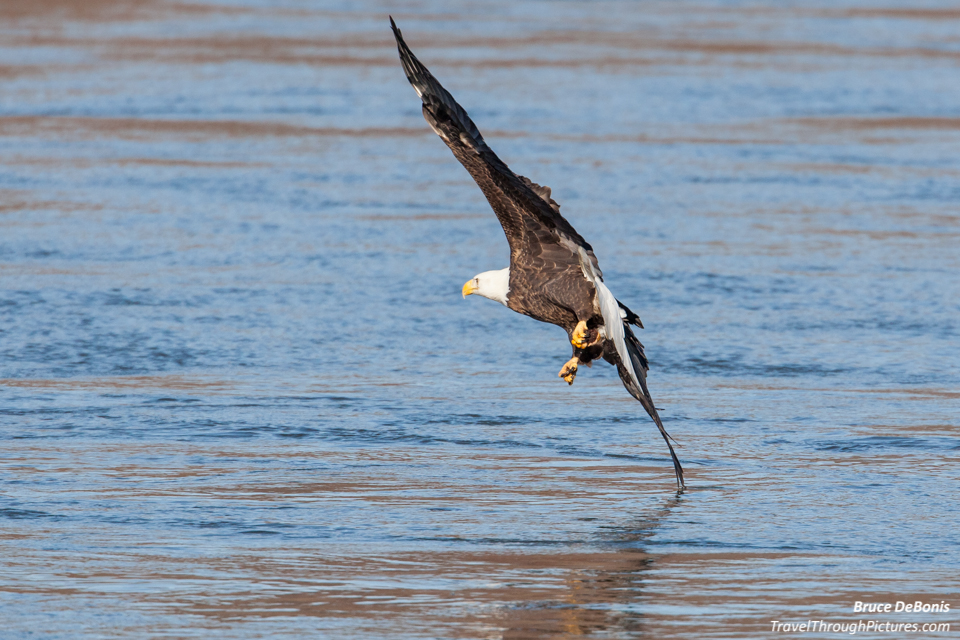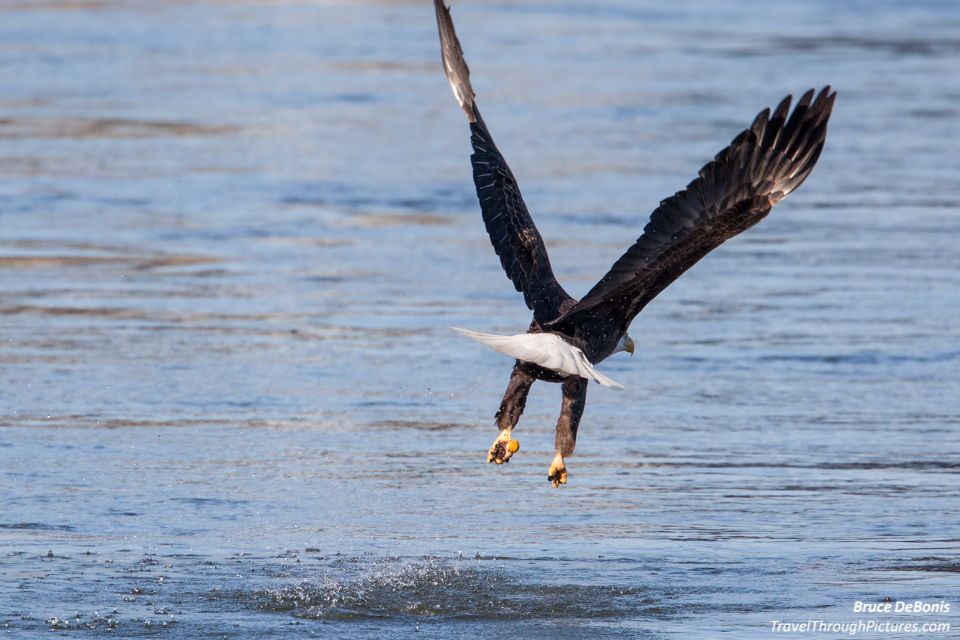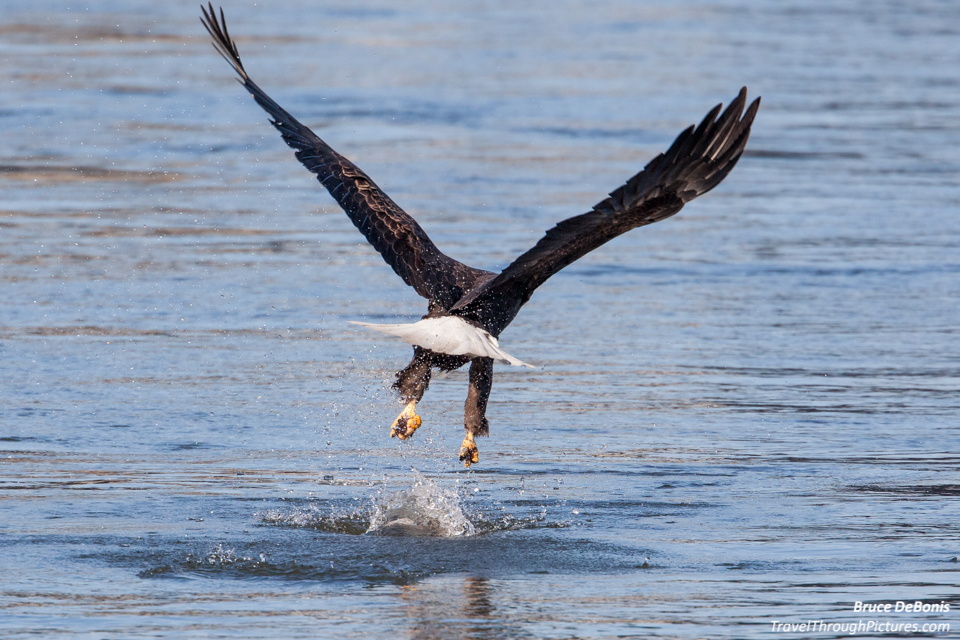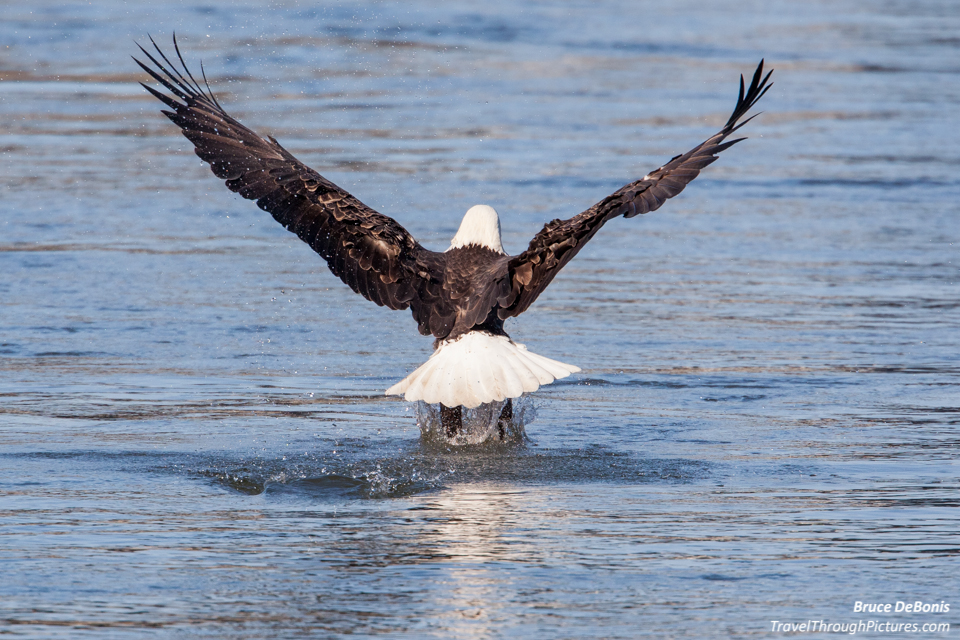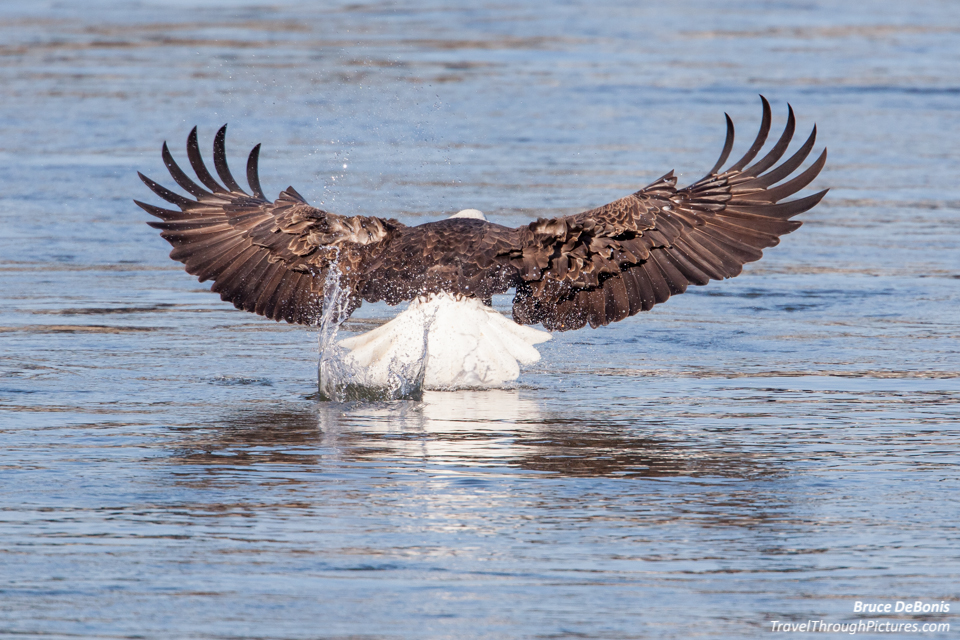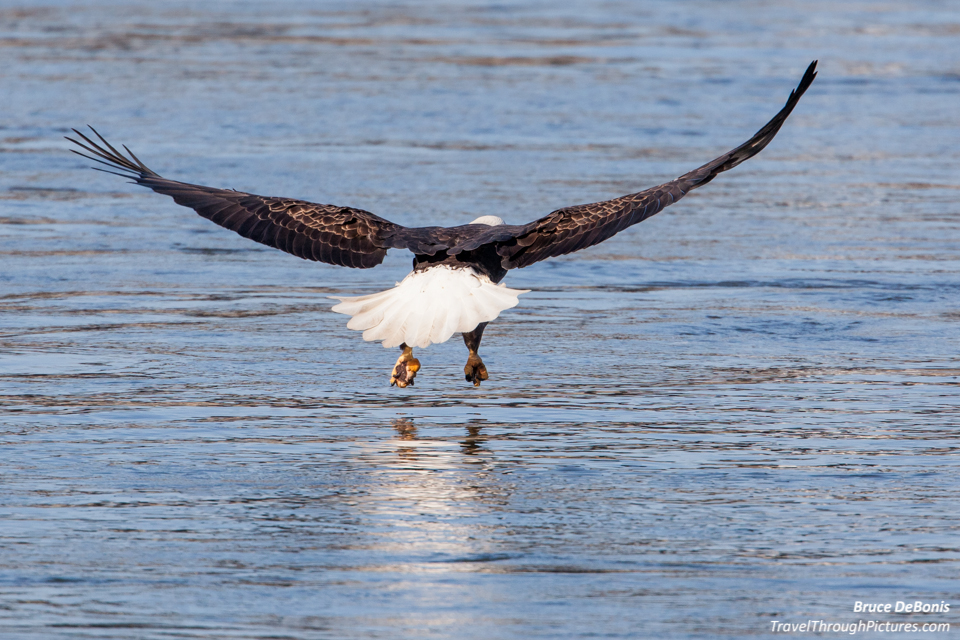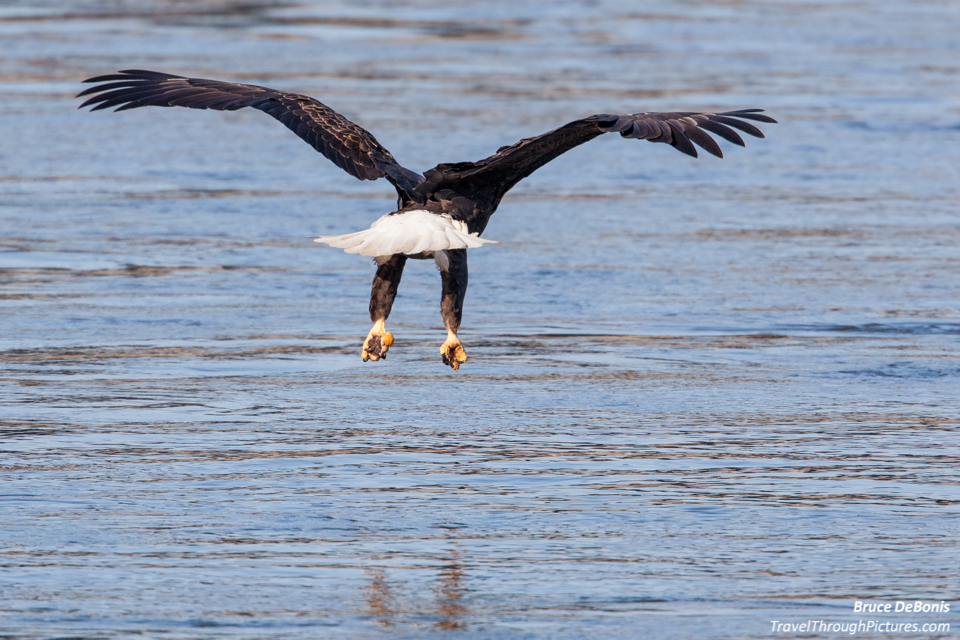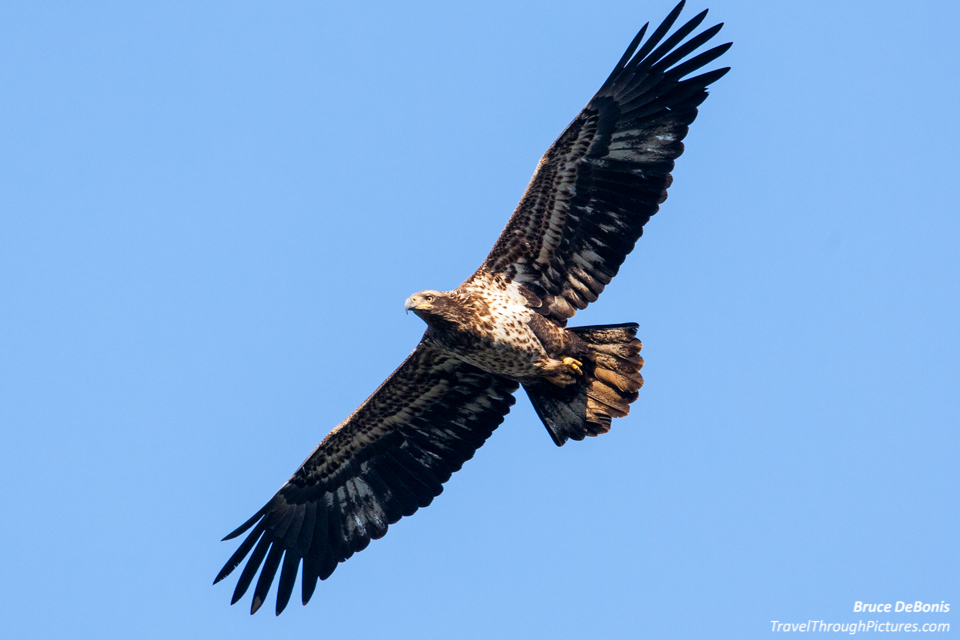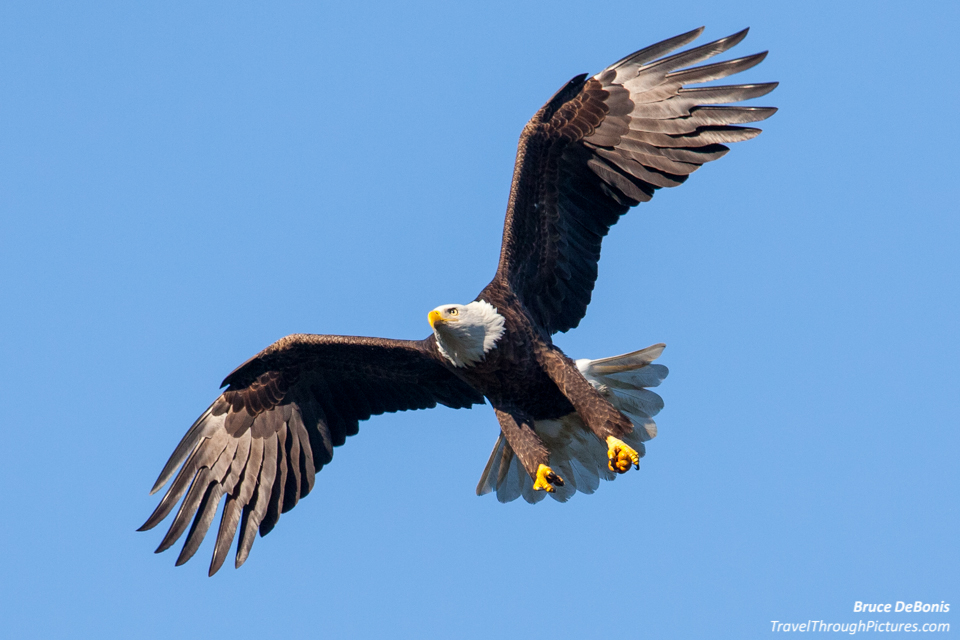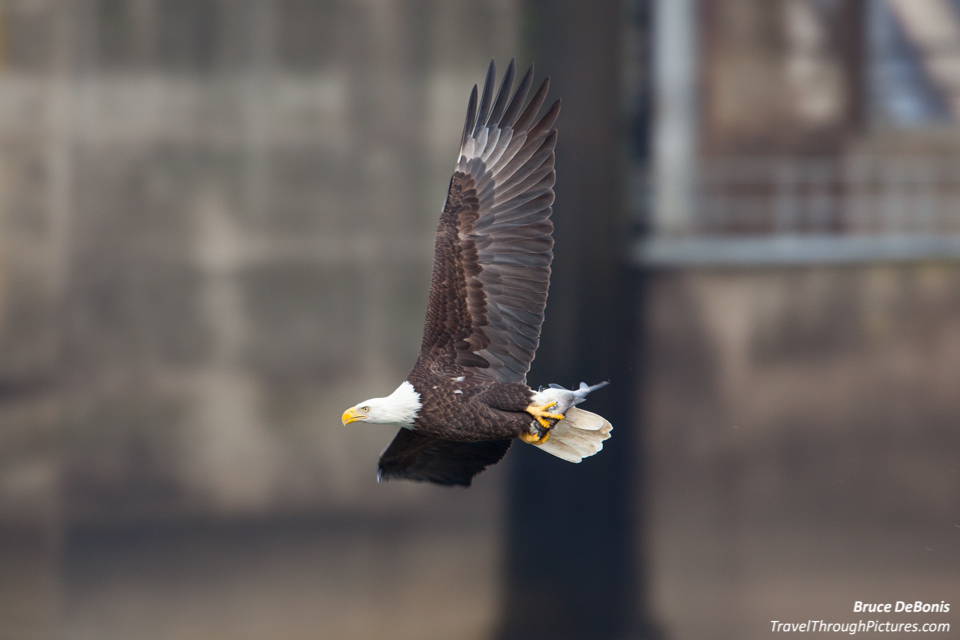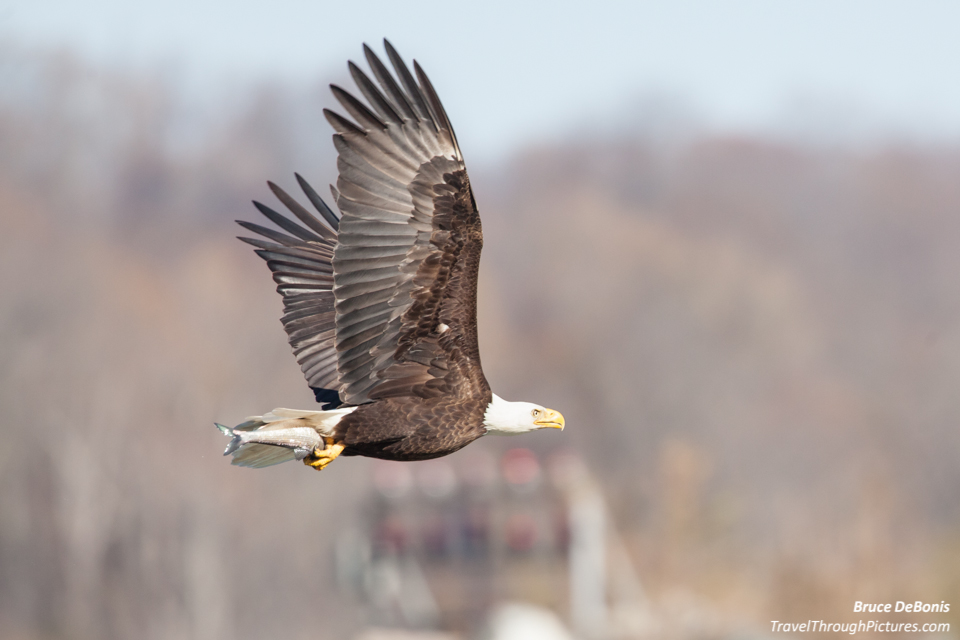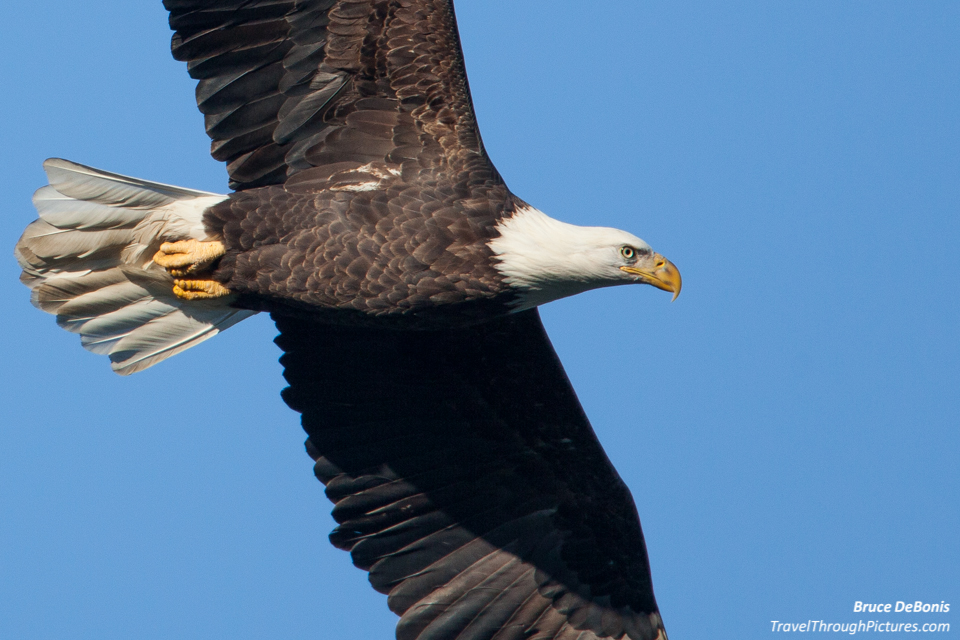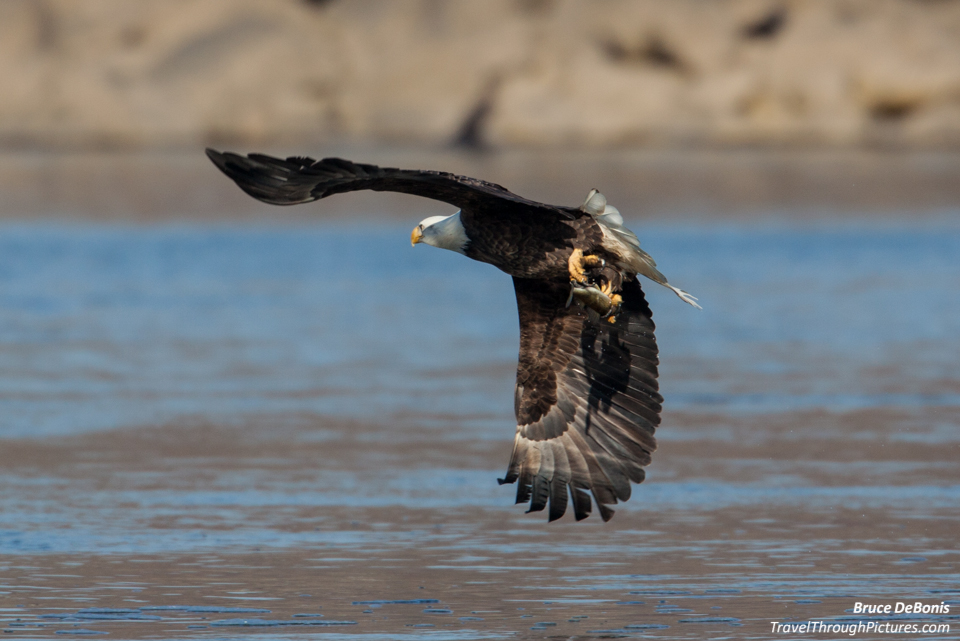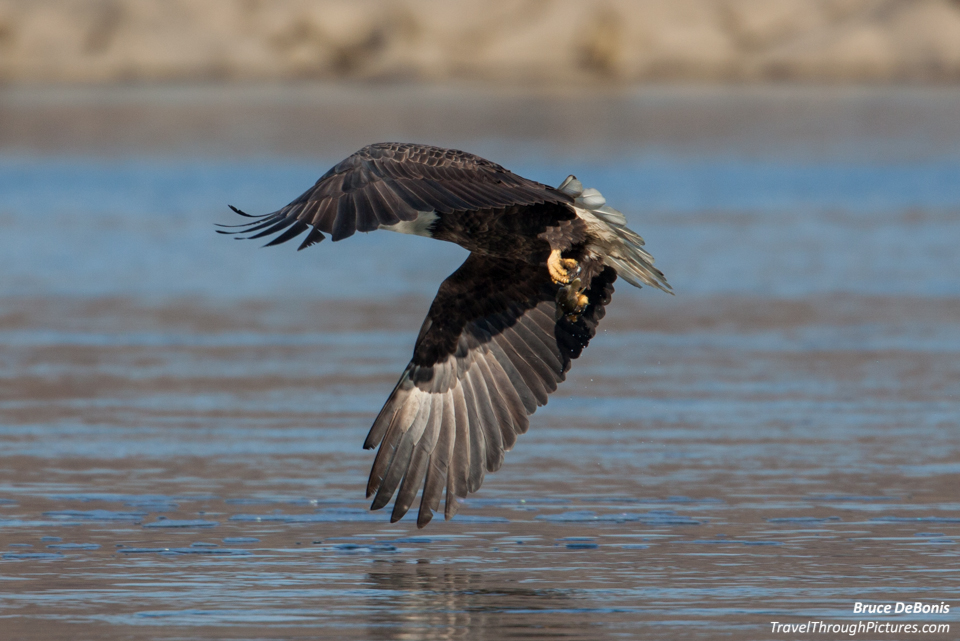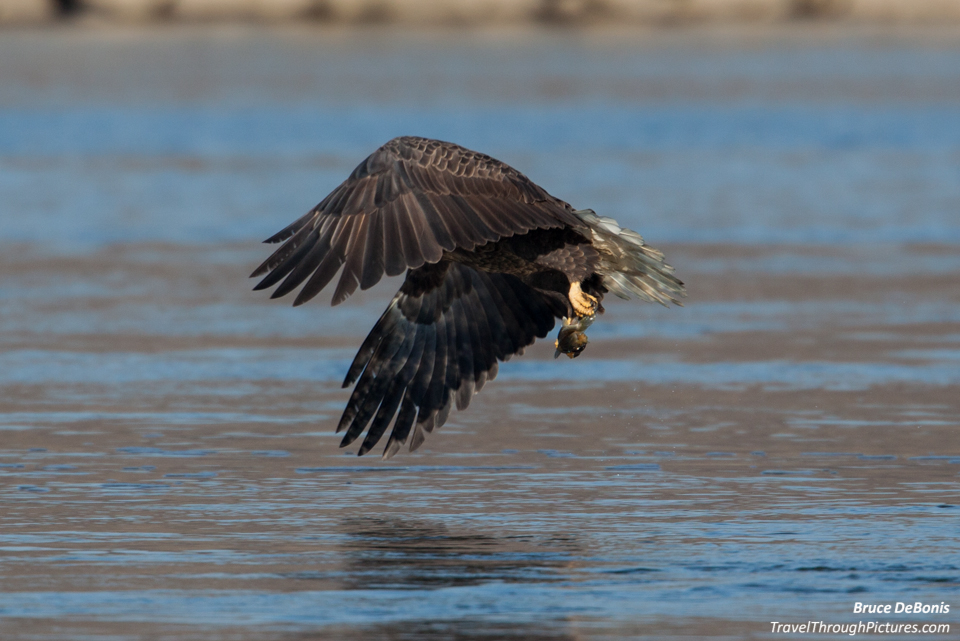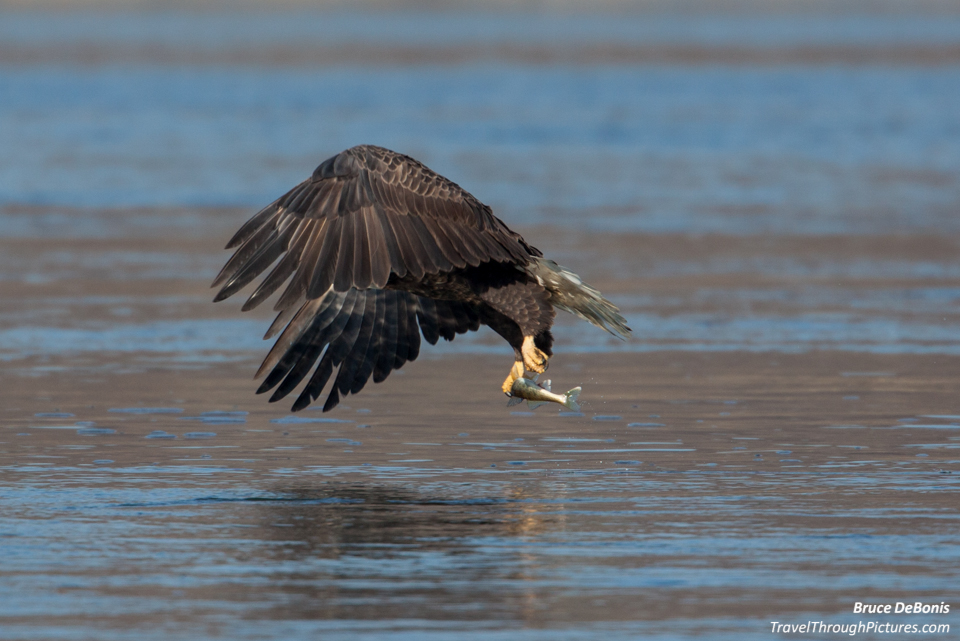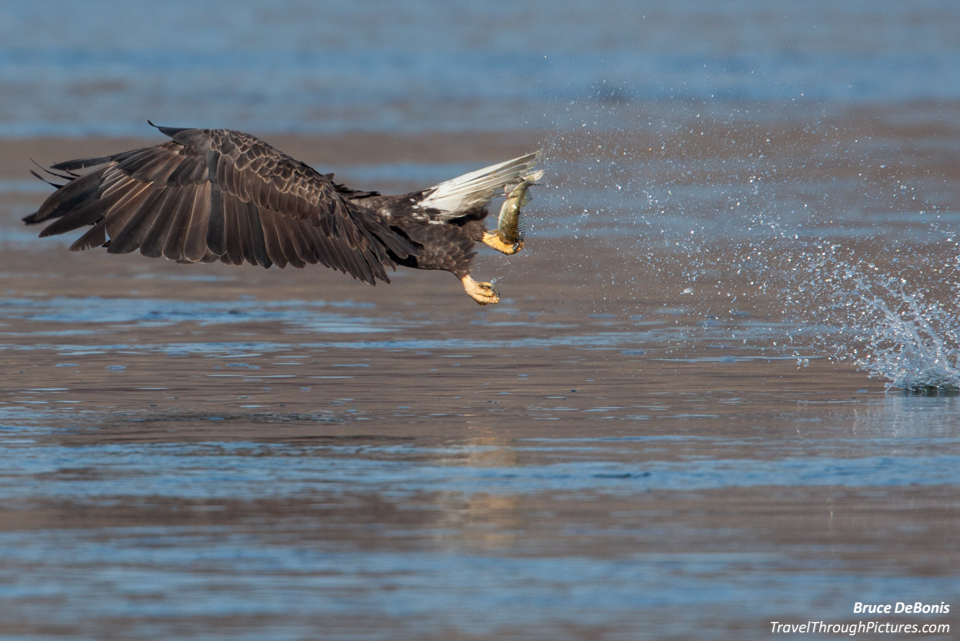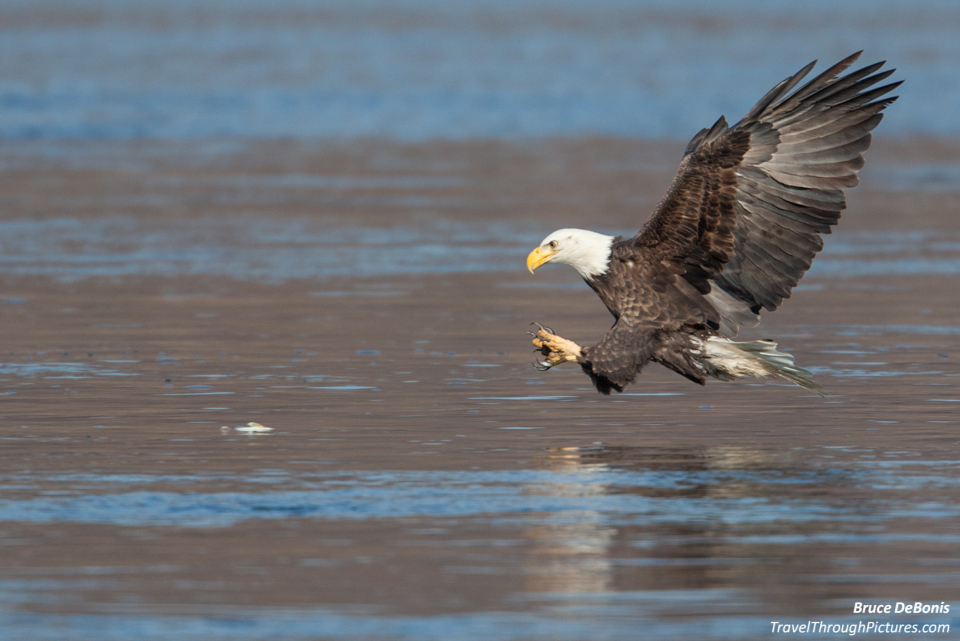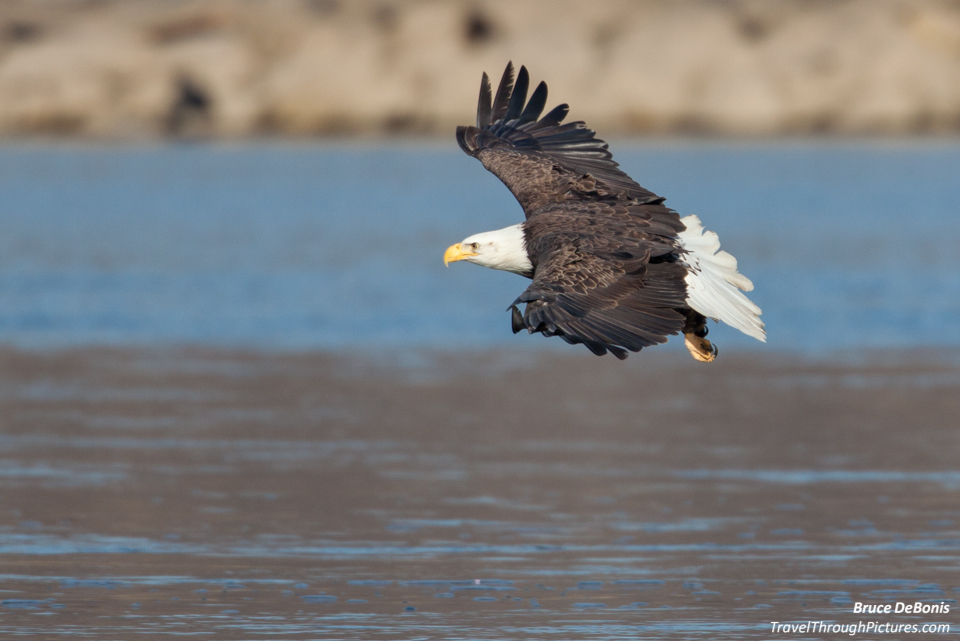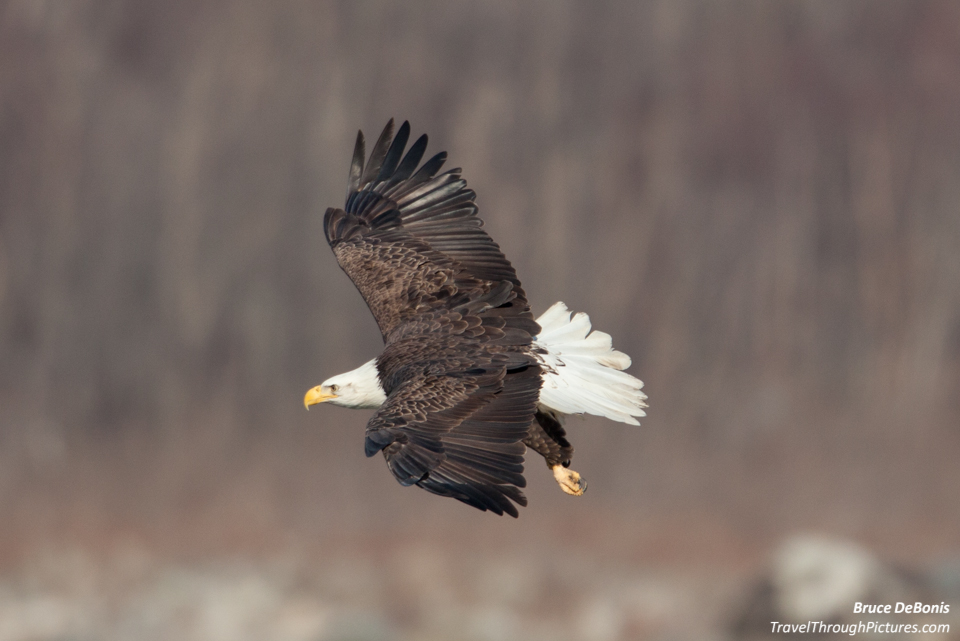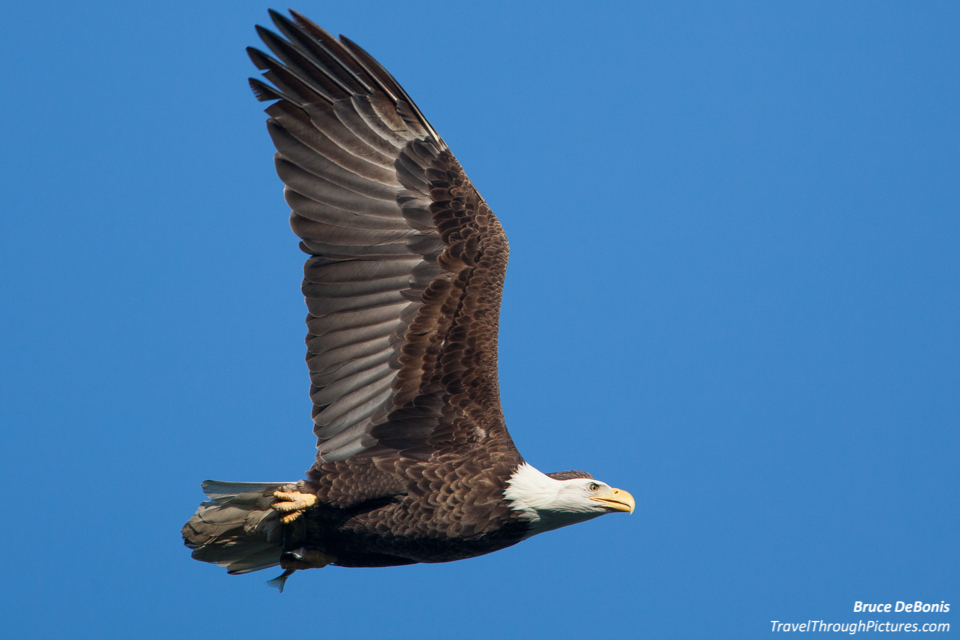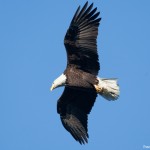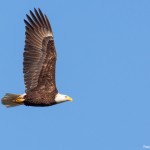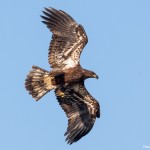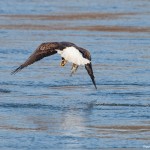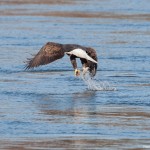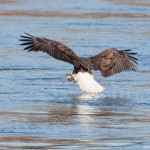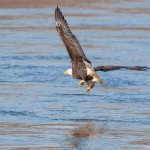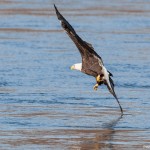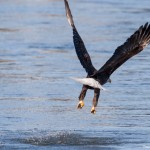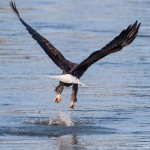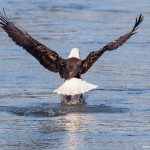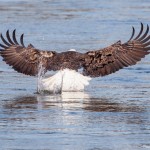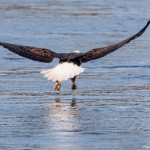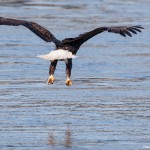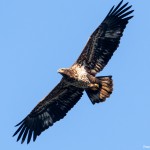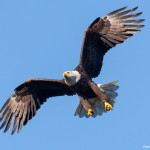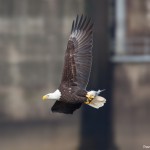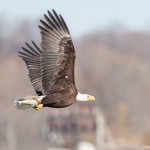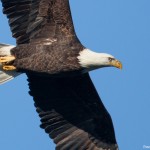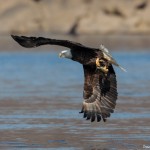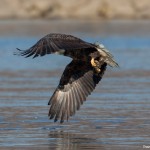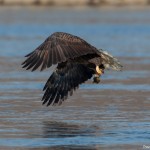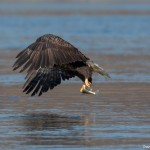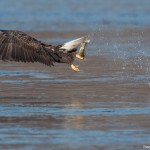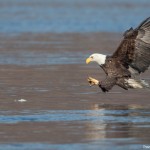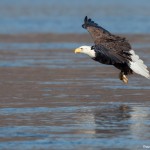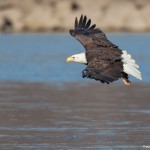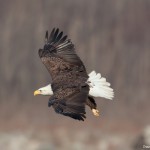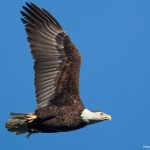Killer Eagle Shots and The Importance of Exposure
Get a load of these shots!!! Yea, I nailed a bunch. I really am proud of these for two reasons:
- They are F-n’ EAGLES and they got bloody fish in their savage talons!!
- I nailed the exposure and getting great shots of birds in flight is really really tough to do
I spent a bunch of days at Conowingo dam where the eagles are, and while I got a ton of good shots, I didn’t get really great ones until my friend Andy gave me some tips…. read on.
Conowingo Dam For Eagles and Vultures
I always wanted a great eagle shot. Well the trick is to know where they are. We are really fortunate here in the Mid Atlantic states because Conowingo Dam is one of the best places in North America to see them. November, December, and January are peak months with over 100 eagles present each day. Yea, no kidding, it is that fantastic.
Located near the mouth of the Susquehanna River in Maryland as it dumps into the Chesapeake Bay, the dam sucks fish through its sluices and stuns the dopey fish. They float belly up with a pathetic fin in the air just waving to the eagles. Well the eagles aren’t stupid and they flock here in the droves. More arrive when ponds and rivers start freezing up as the water below the dam does not freeze due to the current and turbulence. I have heard some old-timers saying the record is about 350!!! at one time. The river is just one big Eagle sushi bar.
The other day, I met a photographer who was a retired chemist at the US Environmental Protection Agency, and he said the comeback of Eagles and other raptors was mainly due to banning DDT that softened their eggshells. Score one for government (well one out of a couple trillion).
The dam is also host to tons of American Black Vultures. Click here for a few shots of these pretty hot things.
More of my eagle posts:
A Real Pro: Bob Madden
By the way, if you really want to see how a professional shoots, like someone who was with National Geographic for over fifteen years, check out Bob Madden’s blog here: BobMadden.com. I met Bob while shooting Eagles at Conowingo. Of course, I had no idea who he was, so I blabbed on about how to get a great exposure and how if he really worked on it, he could improve his shots by listening to me. Good thing he was a nice guy.
Spotted Ones are Juveniles
All the birds here are Eagles. The brown and spotted birds are Juveniles or, as the Birder Brains say, “Juvies”. It takes about four to five years for a juvenile to turn dark brown with a white head and tail.
The long brown fish are most likely Walleye and the silver flatter ones are Chad.
One of the birds here has very deformed feet and it takes him two passes to grab that fish. I noticed that these birds have many deformities in their feet and beaks. I don’t know why, but if you have some knowledge about this, let me know or post a comment at the end of this article.
Getting the Correct Exposure – Shoot in Manual and Shoot Bright
The challenge to nailing birds in flight, is not blurring them and properly exposing their bodies. Hmm… sounds a little…. um…. Anyway, this means getting a fast shutter speed of at least 1/1200 sec to freeze the action, a low ISO to keep the pictures clear and not grainy, and a closed aperture to get deep depth of field to lessen the chances of an out-of-focus shot. In short, pretty impossible until my friend Andy gave me some tips on how to set up my camera. He told me I had to use Manual mode… very scary… and control everything. Here was Andy’s list (mixed in with mine):
- Go on a sunny day… skip cloudy days as there just is not enough light for amateurs like me to get a really great shot.
- Shoot in AI-Servo mode or whatever your camera calls focus tracking, use center focus point only, and turn of image stabilization to speed up your camera’s focusing performance
- Set your shutter for about 1/1200 sec (you really don’t want to go lower than 1/1000 sec, I like 1/1600 or 1/2000 sec)
- Set your ISO as high as you think you can go… you can actually push it a bit farther because if you get a great exposure on the bird, you will see less noise; I don’t like to go over ISO 800 and keep it under 400 if it is nice and sunny
- Set you aperture to about f/6.3
- Fire off a test shot of some well lit, grey rocks or better yet, something white like a sign or placard
- Play with your settings to have the brightest exposure without overexposing the white sign or lightest rocks too much; you do want some overexposure. In your camera menu, set it to highlight overexposure so when you look at your picture in your view screen, any overexposed parts will blink. Change your settings to have some blinking going on in the whitest areas. This is your brightest and best setting for the current lighting conditions. Shoot more test shots and play with the settings and learn your camera.
The best settings depend on how much light you have and your camera’s high ISO capabilities. If you have a sunny day, the settings above should be overexposing your pictures too much so now you have to darken them a bit. This is where you need to know your camera. If your camera is an older or inexpensive model, lowering you ISO will improve your picture quality. Drop it down a click and re-shoot the test shot. I like to bump up my shutter speed closer to 1/2000 sec to really freeze the action… any faster is a waste. Closing your aperture will increase depth of field and help slower or poor focusing cameras get the shot.
My settings, on a sunny day are ISO of 360, shutter around 1/2000 sec, and aperture about f/6.3.
Andy recommended I use the dam wing wall here to set my camera exposure. I had about 25% to 50% of the white placards blinking as overexposed and this worked really well. Another great benefit of using this shot to set up my camera is that I used the black letters to set white balance later in post processing. I then used this white balance for all subsequent shots. When the sun set a bit every half hour, I just re-shot this wall to correct my settings and obtain a new white balance.
Advantages To Shooting Bright
The settings you use for birds in flight will result in an overall bright picture. So, if you just shoot the landscape around you, your picture will be a bit overexposed. But remember, bird bodies are dark and their bodies are what you really want to see.
If your subject, in this case an Eagle, has overexposed parts, then darken you photo by one click. When shooting an adult Eagle, the danger is overexposing their white heads and tails. Review your picture in your rear screen and if anything on the Eagle is blinking as overexposed, then modify your settings downward. To do this, you can modify your shutter, aperture, or ISO. If your shutter is 1/1200 or slower, bump this faster first up to 1/2000, then bump either your ISO downward or your aperture more closed. The ultimate goal here, is to get the exposure on the Eagle to be just one click darker from being overexposed on their head or tail.
Shooting in manual mode has another advantage in that your settings are always at their optimal; the background of a bird in flight changes in a snap…. one moment it is blue sky, then white sky, then brown trees, then glimmering water, etc. etc. etc. If you have your camera in any automatic mode, the settings are going to fluctuate greatly and some shots will be great and others will look like crap with usually a blurred and too-dark bird body.
ISO Lessons
I know this stuff is complicated, but there is no easy, automatic setting on your camera that will just nail birds in flight. It is one of the toughest things for a photographer to shoot. The biggest lesson I learned from shooting these dark birds against bright backgrounds is this: Get the exposure correct on the bird, and you can shoot at higher ISOs – all your shots will be better.
I was underexposing my birds-in-flight shots so I could get a faster shutter speed to freeze the action. Then, in post processing on my computer, I would just lighten up the shot and better expose the bird. When you lighten dark areas like a bird body, the ISO noise comes out screaming and ruins your picture. Get the exposure correct, and you can push the ISO way higher for shooting than what you can lighten in software later. Your pictures will be better if you have to darken in software later rather than lighten them. Wow, I was doing it wrong all along. Thanx Andy!!
The Equipment:
- Canon 5D Mk II
- Canon 500mm L f/4.0 IS
- Canon EF 1.4x II extender (teleconverter)
- Gitzo 3530LS carbon fiber tripod
- Wimberley II gimbal head
- LightRoom 4 for RAW post processing
- Long underwear, warm gloves, and patience
